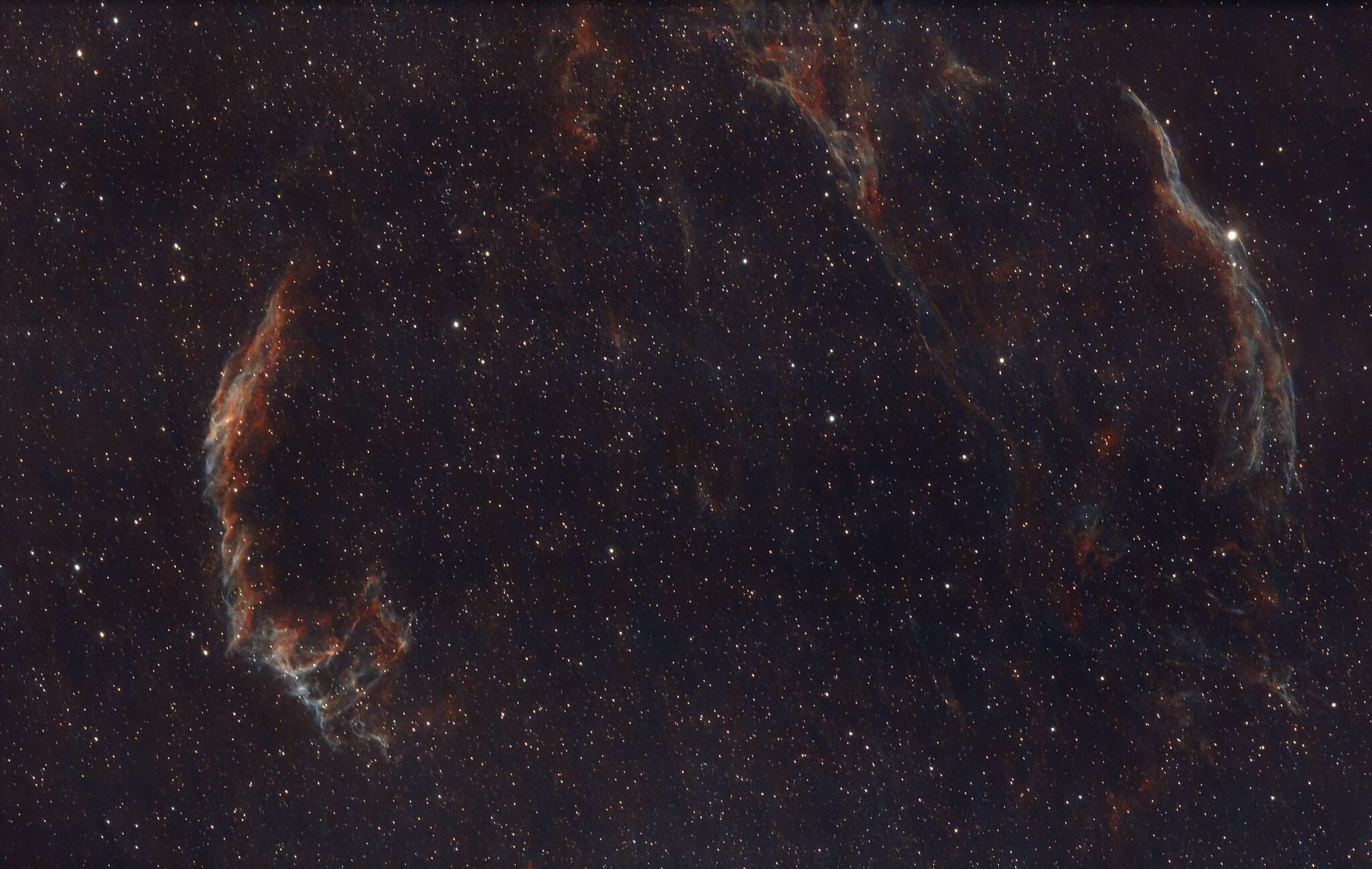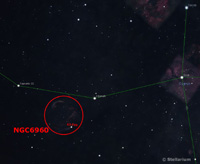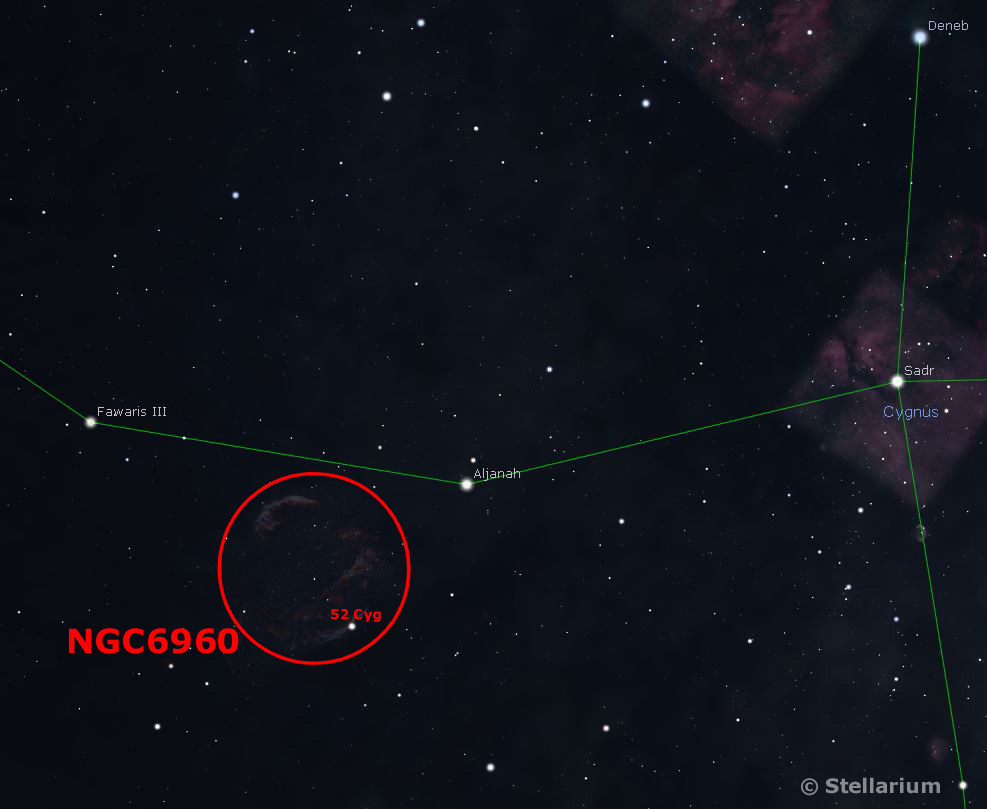Information...
The Cygnus loop is a large supernova remnant, an emission nebula nearly 3° across in the constellation of Cygnus, and about 2,400 light-years from Earth.
At the time of the supernova the star was about 20 times the mass of the Sun and it exploded between 10 - 20,000 years ago. The supernova would have been visble in the daytime here on Earth. Today the remnants are about six times the diameter of the moon.
Different classifications are given to different parts of the loop. NGC6960 - the Western Veil can be seen near the star 52 Cyg; Opposite this is NGC6992 - the Eastern Veil. Between them is a triangular patch of visible luminosity, known as Pickering's Triangle, and two small spots referred to as NGC6974 & NGC6979.
For more info. see the Cygnus Loop and Veil Nenula entries in Wikipedia.
Click here for a stunning HOO Pallete image by James Clark.







